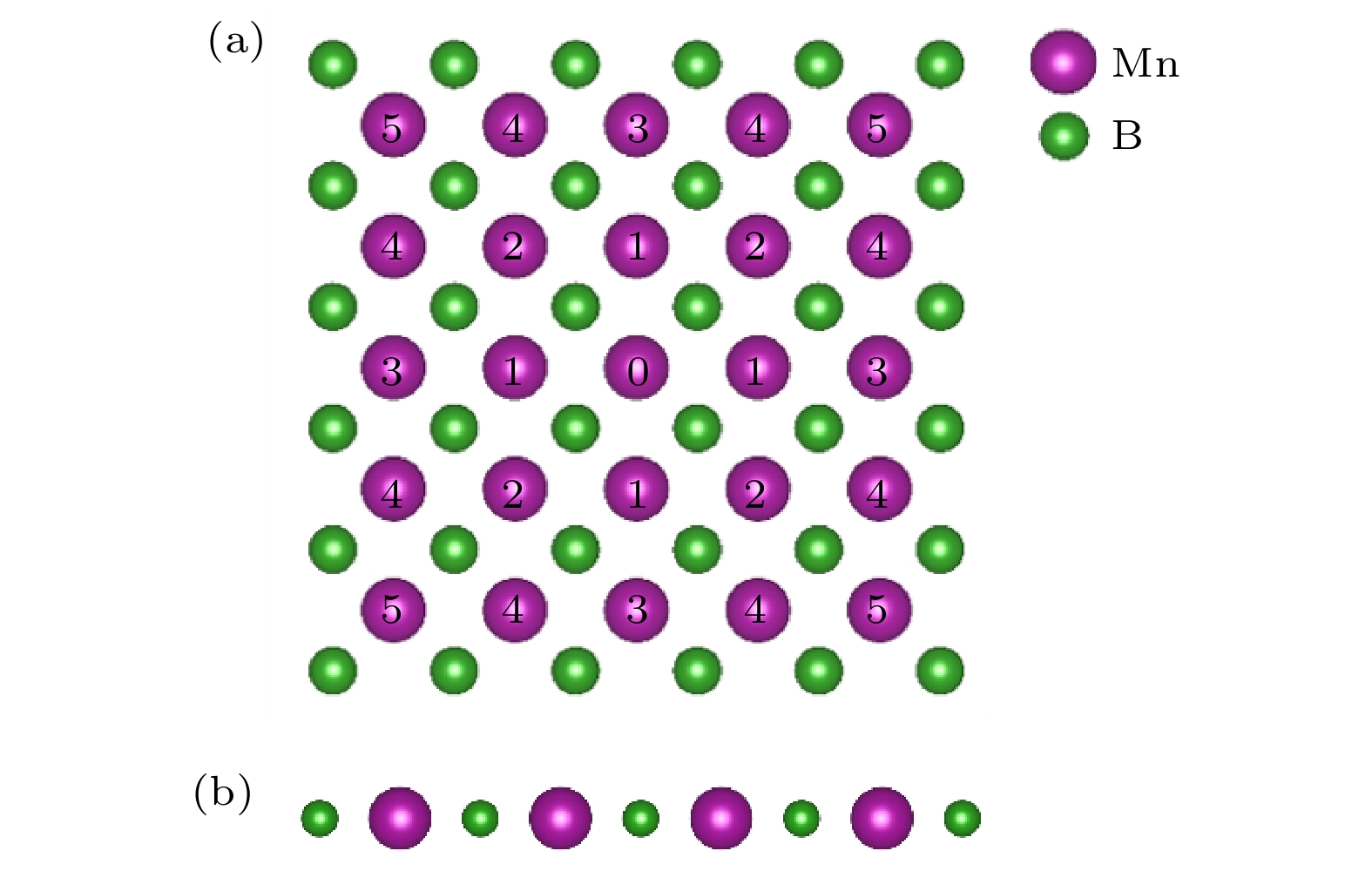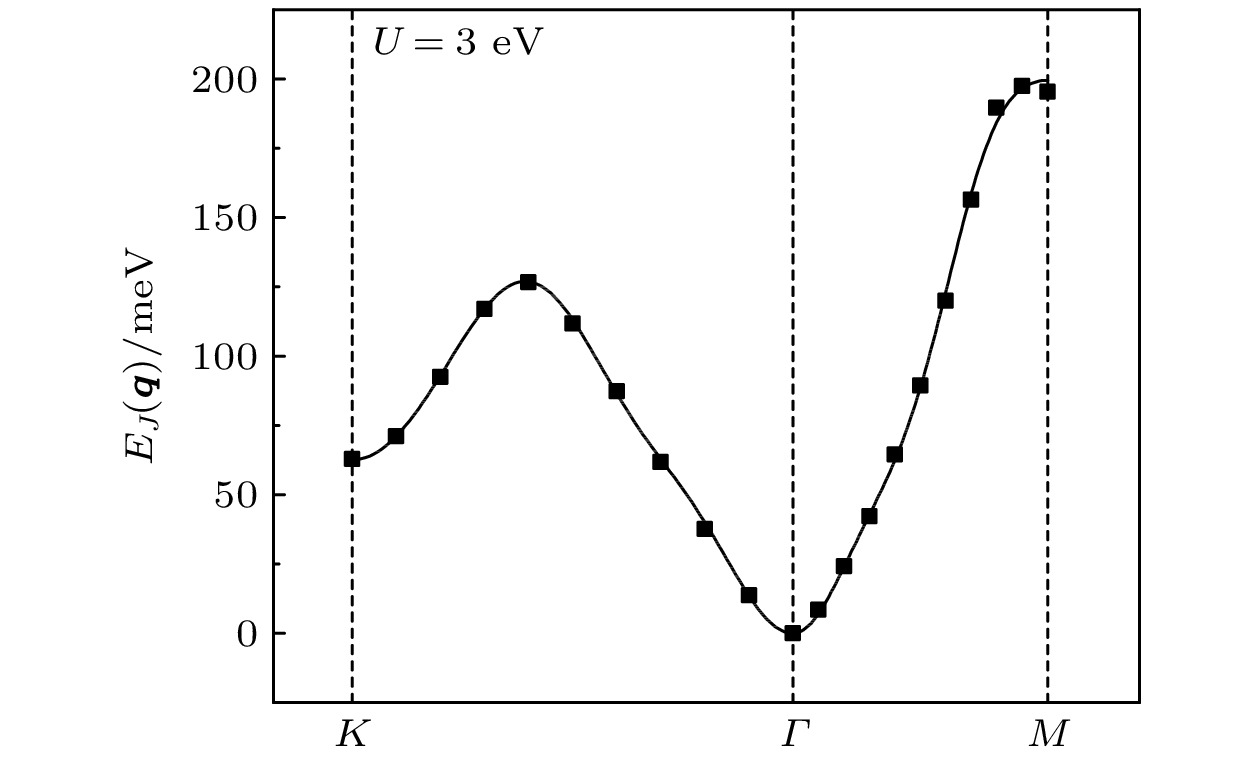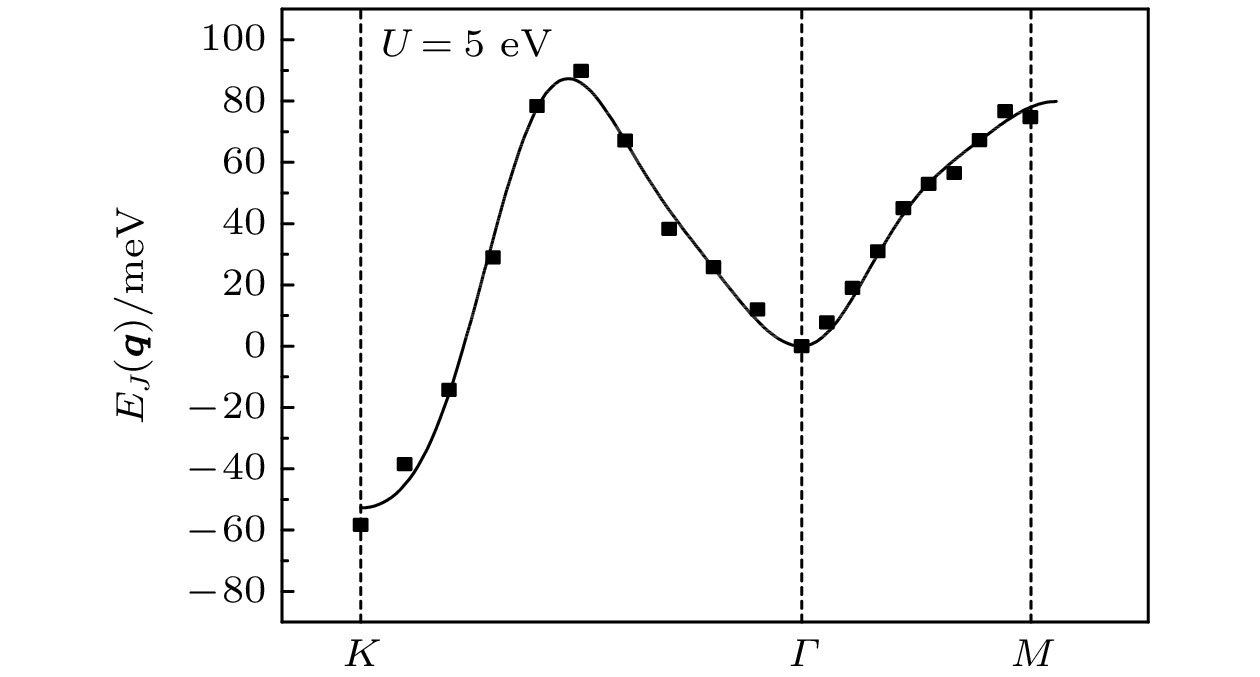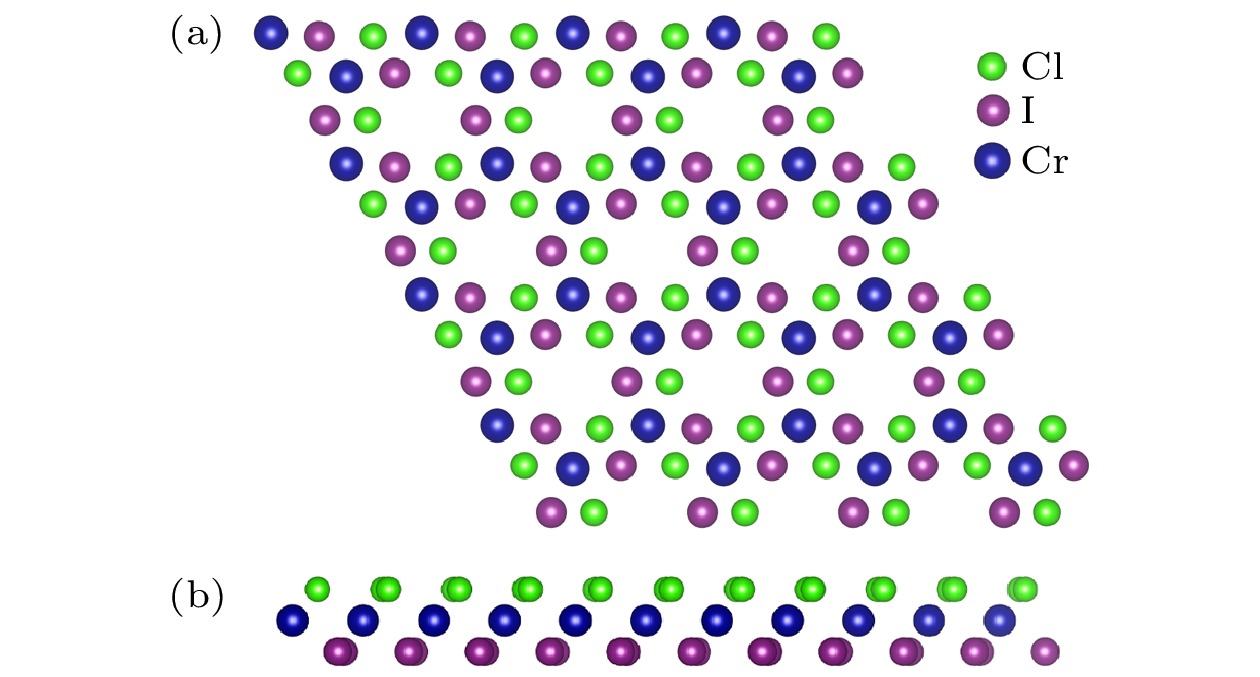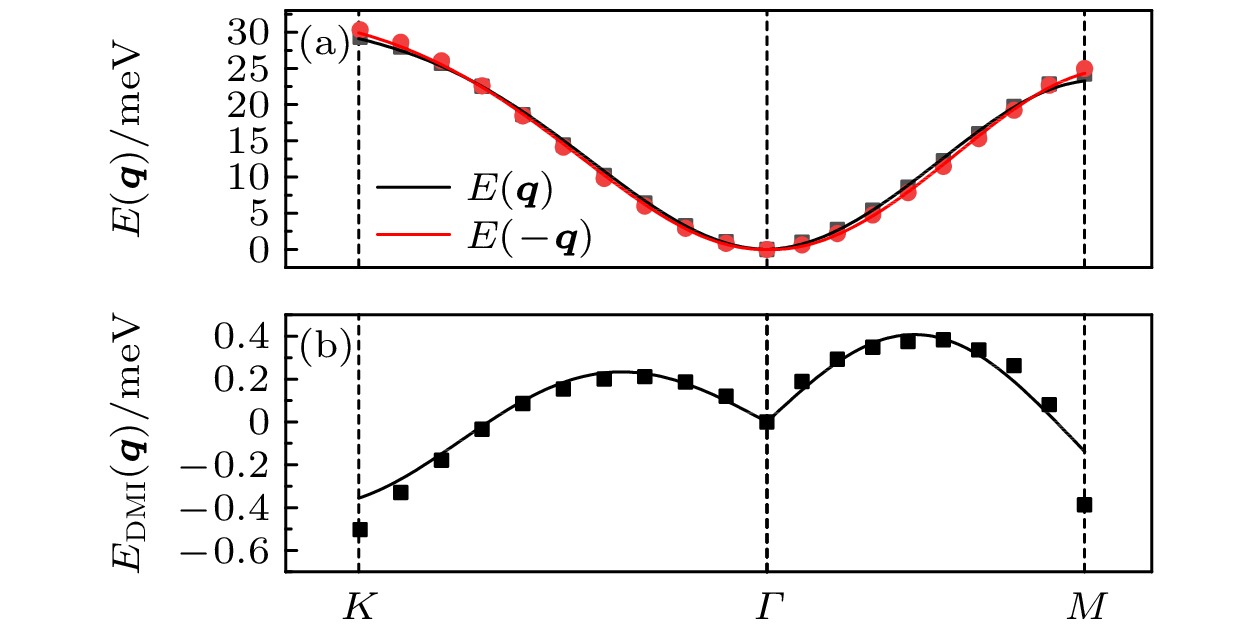-
二维磁性材料是近几年新兴的研究领域, 该材料在开发自旋电子器件等领域具备良好的应用潜能. 为了了解二维磁性材料的磁性质, 明确体系内各近邻磁性原子间的磁相互作用非常重要. 第一性原理为各近邻磁交换参数的计算奠定了基础. 目前各近邻参数的第一性原理计算常用的是能量映射法, 但这种方法存在一定的缺陷. 本文通过广义布洛赫条件推导了3种常见二维磁性结构的海森伯作用与Dzyaloshinskii-Moriya (DM)相互作用的自旋螺旋色散关系, 这3种结构为四方结构, 元胞包含一个磁性原子的六角结构, 元胞包含两个磁性原子的六角结构. 为了将本文推导的自旋螺旋色散关系应用于实际, 我们通过第一性原理计算了一些材料的海森伯和DM作用的交换参数, 这些材料分别是MnB, VSe 2, MnSTe, Cr 2I 3Cl 3. 其中, MnSTe和Cr 2I 3Cl 3都属于二维Janus材料, 磁性原子层的上下层对称性破缺, 整个体系存在DM相互作用.Two-dimensional magnetic material which has been rapidly developed in recent years, has potential applications in developing spintronic devices. In order to understand the magnetic properties of two-dimensional magnetic materials, it is necessary to comprehend the magnetic interaction which is estimated by the exchange parameters between the magnetic atoms. The calculation of the magnetic exchange parameters is based on the first-principle. The commonly used method of determining the values of exchange parameters is energy-mapping. However, this method has some disadvantages. In this paper, the spin-spiral dispersion relationship is derived under the Heisenberg interaction and the Dzyaloshinskii-Moriya (DM) interaction through the generalized Bloch condition of three common two-dimensional magnetic structures: a tetragonal structure, a hexagonal structure in which the cell contains one magnetic atom, a hexagonal structure in which the cell contains two magnetic atoms. The magnetic exchange parameters of some materials are calculated through the first principle. These materials are MnB, VSe 2 MnSTe and Cr 2I 3Cl 3. Among them, the MnSTe and Cr 2I 3Cl 3 are two-dimensional Janus materials, which means that they have space-reversal symmetry broken, that is why there is DM interaction in the system.
-
Keywords:
- two-dimensional magnetic structure /
- magnetic interaction /
- generalized Bloch condition /
- first principles
[1] Bi C, Liu Y H, Newhouse-Illige T, Xu M, Rosales M, Freeland J W, Mryasov O, Zhang S F, Velthuis S G E, Wang W G 2014 Phys. Rev. Lett. 113 267202
[2] Novoselov K S, Mishchenko A, Carvalho A, Castro Neto A H 2016 Science 353 9439
 Google Scholar
Google Scholar
[3] Wang Z, Gutiérrez-Lezama I, Ubrig N, Kroner M, Gibertini M, Taniguchi T, Watanabe K, Imamoğlu A, Giannini E, Morpurgo A F 2018 Nat. Commun. 9 2516
 Google Scholar
Google Scholar
[4] Hu C, Zhang D, Yan F G, Li Y C, Lv Q S, Zhu W K, Wei Z M, Chang K, Wang K Y 2020 Sci. Bull. 65 1072
 Google Scholar
Google Scholar
[5] Mermin N D, Wagner H 1966 Phys. Rev. Lett. 17 1133
 Google Scholar
Google Scholar
[6] Gong C, Li L, Li Z L, Ji H W, Stern A, Xia Y, Cao T, Bao W, Wang C Z, Wang Y, Qiu Z Q, Cava R J, Louie S G, Xia J, Zhang X 2017 Nature 546 265
 Google Scholar
Google Scholar
[7] Huang B, Clark G, Navarro-Moratalla E, Klein D R, Cheng R, Seyler K L, Zhong D, Schmidgall E, McGuire M A, Cobden D H, Yao W, Xiao D, Jarillo-Herrero P, Xu X D 2017 Nature 546 270
 Google Scholar
Google Scholar
[8] Deng Y, Yu Y, Song Y, Zhang J Z, Wang N Z, Sun Z Y, Yi Y F, Wu Y Z, Wu S W, Zhu J Y, Wang J, Chen X H, Zhang Y B 2018 Nature 563 94
 Google Scholar
Google Scholar
[9] Bonilla M, Kolekar S, Ma Y J, Diaz H C, Kalappattil V, Das R, Eggers T, Gutierrez H R, Phan M H, Batzill M 2018 Nat. Nanotechnol. 13 289
 Google Scholar
Google Scholar
[10] O'Hara D J, Zhu T, Trout A H, Ahmed A S, Luo Y Q, Lee C H, Brenner M R, Rajan S, Gupta J, McComb D W, Kawakami R K 2018 Nano. Lett. 18 3125
 Google Scholar
Google Scholar
[11] Dzyaloshinsky I 1958 J. Phys. Chem. Solids 4 241
 Google Scholar
Google Scholar
[12] Moriya T 1960 Phys. Rev. 120 91
 Google Scholar
Google Scholar
[13] Muehlbauer S, Binz B, Jonietz F, Pfleiderer C, Rosch A, Neubauer A, Georgii R, Böni P 2009 Science 323 915
 Google Scholar
Google Scholar
[14] Zhu Y, Ma C L, Shi D N, Zhang K C 2014 Phys. Lett. A 378 2234
 Google Scholar
Google Scholar
[15] Yang H X, Thiaville A, Rohart S, Fert A, Chshiev M 2015 Phys. Rev. Lett. 115 267210
 Google Scholar
Google Scholar
[16] Pan Y, Zhu Y, Shi D N, Wei X Y, Ma C L, Zhang K C 2015 J. Alloys Compd. 644 341
 Google Scholar
Google Scholar
[17] Xiang H J, Lee C, Koo H J, Gong X G 2013 Dalton Trans. 42 823
 Google Scholar
Google Scholar
[18] Marsman M, Hafner J 2002 Phys. Rev. B 66 224409
 Google Scholar
Google Scholar
[19] Sandratskii L M 1991 J. Phys. Condens. Matter 3 8565
 Google Scholar
Google Scholar
[20] Knöpfle K, Sandratskii L M, Kübler J 2000 Phys. Rev. B 62 5564
 Google Scholar
Google Scholar
[21] Hector A L, Jura M, Levason W, Reid S D, Reid G 2009 New J. Chem. 33 641
 Google Scholar
Google Scholar
[22] Kresse G, Joubert D 1999 Phys. Rev. B 59 1758
[23] Blöchl P E 1994 Phys. Rev. B 50 17953
 Google Scholar
Google Scholar
[24] Farooq M U, Hashmi A, Khan I, Hong J S 2017 Sci. Rep. 7 17101
 Google Scholar
Google Scholar
[25] Liu C, Fu B T, Yin H B, Zhang G B, Dong C 2020 Appl. Phys. Lett. 117 103101
 Google Scholar
Google Scholar
[26] Zhang J, Jia S, Kholmanov I, Dong L, Er D, Chen W B, Guo H, Jin Z H, Shenoy V B, Shi L, Lou J 2017 ACS Nano 11 8192
 Google Scholar
Google Scholar
[27] He J J, Li S 2018 Comput. Mater. Sci. 152 151
 Google Scholar
Google Scholar
[28] Xu C S, Feng J S, Prokhorenko S, Nahas Y, Xiang H J, Bellaiche L 2020 Phys. Rev. B 101 060404
 Google Scholar
Google Scholar
[29] Fert A, Cros V, Sampaio J 2013 Nat. Nanotechnol. 8 152
 Google Scholar
Google Scholar
-
图 3 (a)六角结构的原胞基矢和倒格基矢的示意图; (b)六角结构的磁性原子及各近邻原子的分布; (c) 磁性原子的磁矩变化坐标系(蓝色坐标轴)以及二维晶格坐标系(黑色坐标轴)示意图
Fig. 3. (a) The labeled a 1 and a 2 are basis vectors and b 1 and b 2 are reciprocal lattice vectors. (b) distribution of neighboring atoms; (c) blue axis and black axis represent the coordinate system of magnetic moment and two dimensional lattice , respectively.
图 9 (a)离散点是MnSTe体系通过程序计算得到的自旋螺旋能量色散关系 E( q )和 E(– q ), 其中 q 是自旋螺旋的波矢, 实线是拟合曲线; (b)离散点是MnSTe体系通过程序计算的 E( q )与 E(– q )之间的能量差 E DMI( q ), 实线是拟合曲线
Fig. 9. (a) Scatter symbols are energy dispersion E( q ) and E(– q ) of MnSTe as a function of the spiral wave vector q calculated by program, lines are fitted ones; (b) scatter symbols are E DMI( q ) which means the difference between E( q ) and E(– q ), lines are fitted ones.
图 11 (a)离散点是Cr 2I 3Cl 3体系通过程序计算得到的自旋螺旋能量色散关系 E( q )和 E(– q ), 其中 q 是自旋螺旋的波矢, 实线是拟合曲线; (b)离散点是Cr 2I 3Cl 3体系通过程序计算的 E( q )与 E(– q )之间的能量差 E DMI( q ), 实线是拟合曲线
Fig. 11. (a) Scatter symbols are energy dispersion E( q ) and E(– q ) of Cr 2I 3Cl 3 as a function of the spiral wave vector q calculated by program, lines are fitted ones; (b) scatter symbols are E DMI( q ) which means the difference between E( q ) and E(– q ), lines are fitted ones.
表 1 VSe 2结构中磁性原子各近邻的海森伯交换参数大小(单位: meV)
Table 1. Calculated parameters of Heisenberg exchange J of VSe 2, J is considered to the eighth neighbor. (The unit of J is meV).
J 1 J 2 J 3 J 4 J 5 J 6 J 7 J 8 27.24 12.81 –2.8 0.59 –1 –1.5 –0.5 0.38 表 2 MnB结构( U= 3 eV)中磁性原子各近邻的海森伯交换参数大小(单位: meV)
Table 2. Calculated parameters of Heisenberg exchange J of MnB, J is considered to the eighth neighbor. (The unit of J is meV).
J 1 J 2 J 3 J 4 J 5 J 6 J 7 J 8 21.22 44.5 –2.52 –4.53 0.952 1.08 0.569 1.27 表 3 MnSTe结构中磁性原子各近邻的海森伯交换参数大小(单位: meV)
Table 3. Calculated parameters of Heisenberg exchange J of MnSTe, J is considered to the eighth neighbor. (The unit of J is meV).
J 1 J 2 J 3 J 4 J 5 J 6 J 7 J 8 5.49 4.64 6 –1.09 –1.32 0.765 –0.046 0.76 表 4 MnSTe结构中磁性原子各近邻的DM交换参数大小(单位: meV)
Table 4. Calculated parameters of DM exchange d of MnSTe, d is considered to the forth neighbor. (The unit of d is meV).
d 1 d 2 d 3 d 4 5.46 1.77 2.78 –0.248 表 5 Cr 2I 3Cl 3结构中磁性原子各近邻的海森伯交换参数大小(单位: meV)
Table 5. Calculated parameters of Heisenberg exchange J of Cr 2I 3Cl 3, J is considered to the eighth neighbor. (The unit of J is meV).
J 1 J 2 J 3 J 4 J 5 J 6 J 7 J 8 12.92 –0.35 2.11 3.55 –1.46 –0.67 –0.11 0.841 表 6 Cr 2I 3Cl 3结构中磁性原子各近邻的DM交换参数大小(单位: meV)
Table 6. Calculated parameters of DM exchange d of Cr 2I 3Cl 3, d is considered to the forth neighbor. (The unit of d is meV).
d 1 d 2 d 3 d 4 –0.88 0.378 1.04 –0.0493 -
[1] Bi C, Liu Y H, Newhouse-Illige T, Xu M, Rosales M, Freeland J W, Mryasov O, Zhang S F, Velthuis S G E, Wang W G 2014 Phys. Rev. Lett. 113 267202
[2] Novoselov K S, Mishchenko A, Carvalho A, Castro Neto A H 2016 Science 353 9439
 Google Scholar
Google Scholar
[3] Wang Z, Gutiérrez-Lezama I, Ubrig N, Kroner M, Gibertini M, Taniguchi T, Watanabe K, Imamoğlu A, Giannini E, Morpurgo A F 2018 Nat. Commun. 9 2516
 Google Scholar
Google Scholar
[4] Hu C, Zhang D, Yan F G, Li Y C, Lv Q S, Zhu W K, Wei Z M, Chang K, Wang K Y 2020 Sci. Bull. 65 1072
 Google Scholar
Google Scholar
[5] Mermin N D, Wagner H 1966 Phys. Rev. Lett. 17 1133
 Google Scholar
Google Scholar
[6] Gong C, Li L, Li Z L, Ji H W, Stern A, Xia Y, Cao T, Bao W, Wang C Z, Wang Y, Qiu Z Q, Cava R J, Louie S G, Xia J, Zhang X 2017 Nature 546 265
 Google Scholar
Google Scholar
[7] Huang B, Clark G, Navarro-Moratalla E, Klein D R, Cheng R, Seyler K L, Zhong D, Schmidgall E, McGuire M A, Cobden D H, Yao W, Xiao D, Jarillo-Herrero P, Xu X D 2017 Nature 546 270
 Google Scholar
Google Scholar
[8] Deng Y, Yu Y, Song Y, Zhang J Z, Wang N Z, Sun Z Y, Yi Y F, Wu Y Z, Wu S W, Zhu J Y, Wang J, Chen X H, Zhang Y B 2018 Nature 563 94
 Google Scholar
Google Scholar
[9] Bonilla M, Kolekar S, Ma Y J, Diaz H C, Kalappattil V, Das R, Eggers T, Gutierrez H R, Phan M H, Batzill M 2018 Nat. Nanotechnol. 13 289
 Google Scholar
Google Scholar
[10] O'Hara D J, Zhu T, Trout A H, Ahmed A S, Luo Y Q, Lee C H, Brenner M R, Rajan S, Gupta J, McComb D W, Kawakami R K 2018 Nano. Lett. 18 3125
 Google Scholar
Google Scholar
[11] Dzyaloshinsky I 1958 J. Phys. Chem. Solids 4 241
 Google Scholar
Google Scholar
[12] Moriya T 1960 Phys. Rev. 120 91
 Google Scholar
Google Scholar
[13] Muehlbauer S, Binz B, Jonietz F, Pfleiderer C, Rosch A, Neubauer A, Georgii R, Böni P 2009 Science 323 915
 Google Scholar
Google Scholar
[14] Zhu Y, Ma C L, Shi D N, Zhang K C 2014 Phys. Lett. A 378 2234
 Google Scholar
Google Scholar
[15] Yang H X, Thiaville A, Rohart S, Fert A, Chshiev M 2015 Phys. Rev. Lett. 115 267210
 Google Scholar
Google Scholar
[16] Pan Y, Zhu Y, Shi D N, Wei X Y, Ma C L, Zhang K C 2015 J. Alloys Compd. 644 341
 Google Scholar
Google Scholar
[17] Xiang H J, Lee C, Koo H J, Gong X G 2013 Dalton Trans. 42 823
 Google Scholar
Google Scholar
[18] Marsman M, Hafner J 2002 Phys. Rev. B 66 224409
 Google Scholar
Google Scholar
[19] Sandratskii L M 1991 J. Phys. Condens. Matter 3 8565
 Google Scholar
Google Scholar
[20] Knöpfle K, Sandratskii L M, Kübler J 2000 Phys. Rev. B 62 5564
 Google Scholar
Google Scholar
[21] Hector A L, Jura M, Levason W, Reid S D, Reid G 2009 New J. Chem. 33 641
 Google Scholar
Google Scholar
[22] Kresse G, Joubert D 1999 Phys. Rev. B 59 1758
[23] Blöchl P E 1994 Phys. Rev. B 50 17953
 Google Scholar
Google Scholar
[24] Farooq M U, Hashmi A, Khan I, Hong J S 2017 Sci. Rep. 7 17101
 Google Scholar
Google Scholar
[25] Liu C, Fu B T, Yin H B, Zhang G B, Dong C 2020 Appl. Phys. Lett. 117 103101
 Google Scholar
Google Scholar
[26] Zhang J, Jia S, Kholmanov I, Dong L, Er D, Chen W B, Guo H, Jin Z H, Shenoy V B, Shi L, Lou J 2017 ACS Nano 11 8192
 Google Scholar
Google Scholar
[27] He J J, Li S 2018 Comput. Mater. Sci. 152 151
 Google Scholar
Google Scholar
[28] Xu C S, Feng J S, Prokhorenko S, Nahas Y, Xiang H J, Bellaiche L 2020 Phys. Rev. B 101 060404
 Google Scholar
Google Scholar
[29] Fert A, Cros V, Sampaio J 2013 Nat. Nanotechnol. 8 152
 Google Scholar
Google Scholar
计量
- 文章访问数: 8433
- PDF下载量: 166
- 被引次数: 0













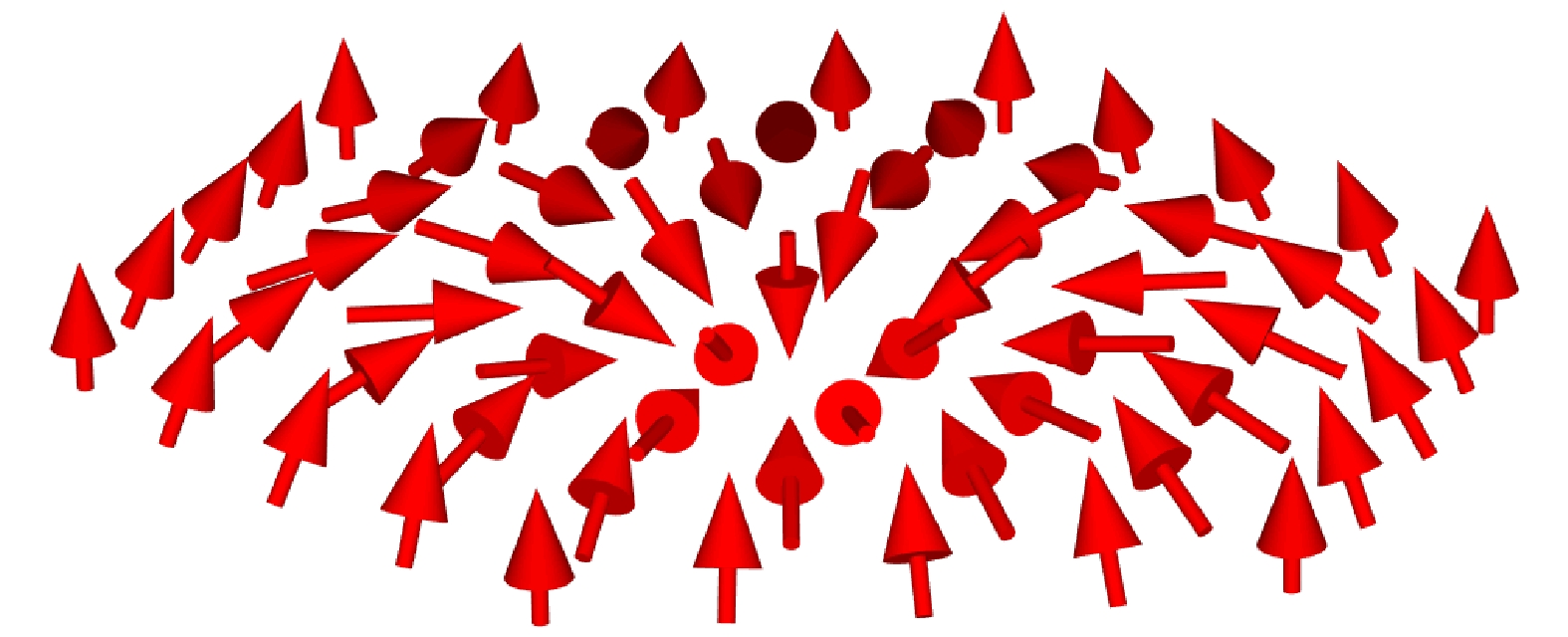
 下载:
下载:



